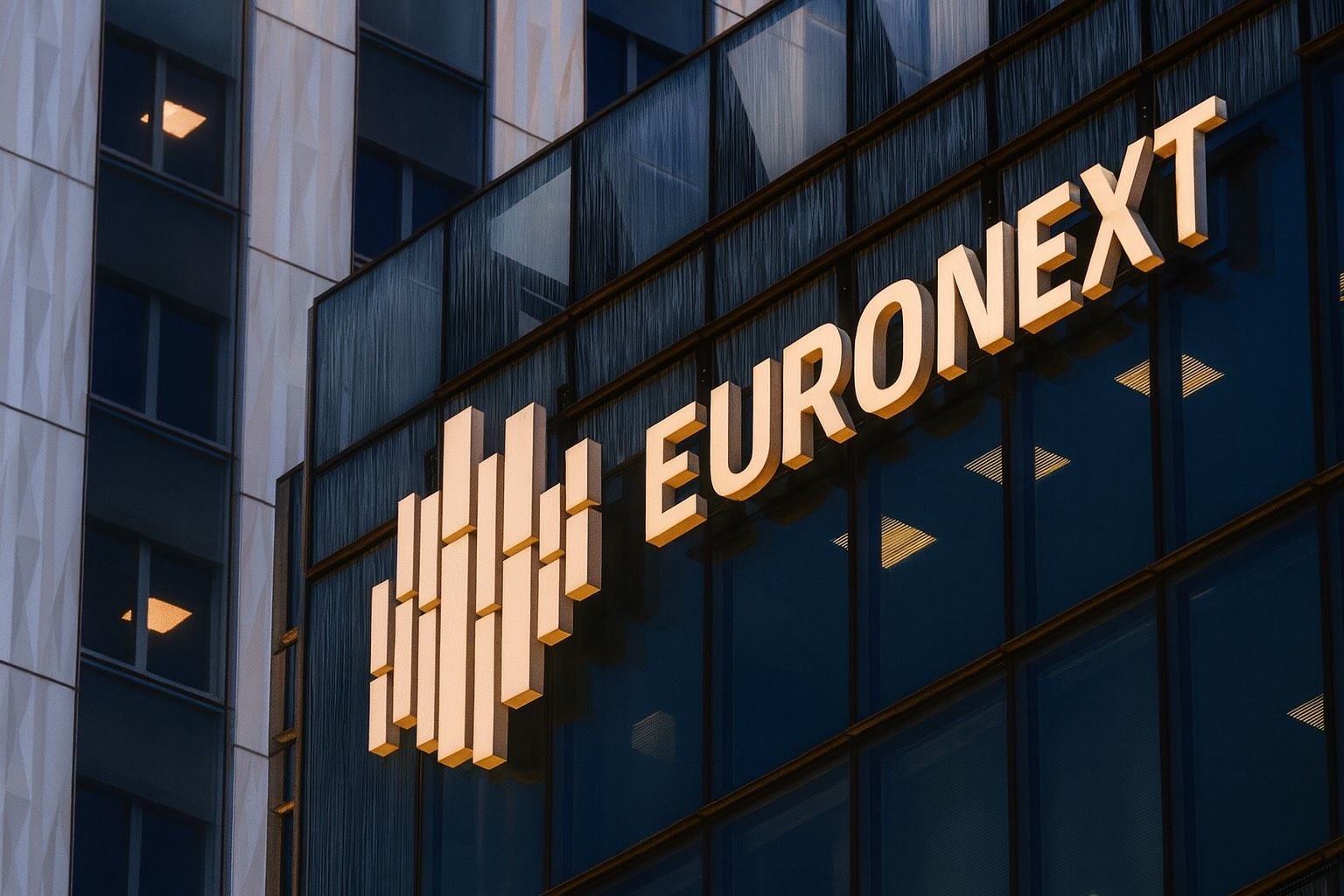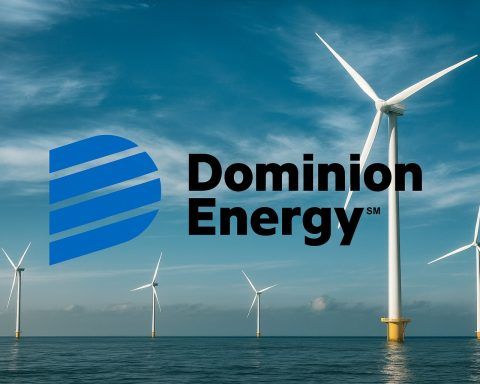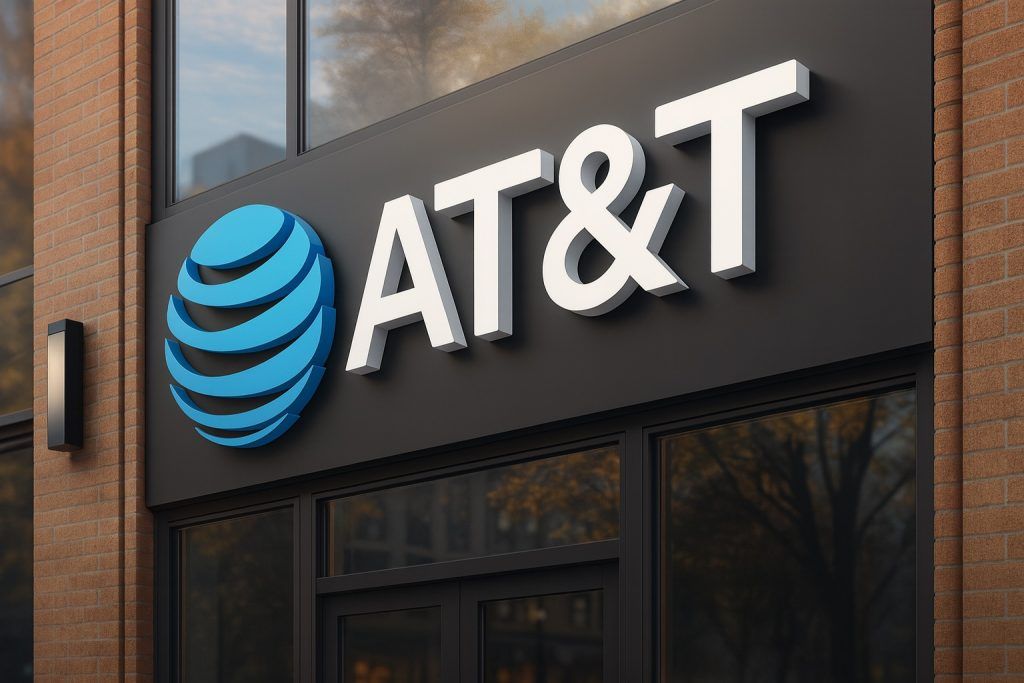- Paris benchmark flat near all-time high: France’s CAC 40 index traded around 8,230 points on October 27, 2025 – virtually unchanged (+0.1%) and hovering just shy of record levels reached last week [1].
- Moody’s issues debt warning: Credit agency Moody’s revised France’s outlook to “negative” late Friday [2], citing political gridlock and deficits, but investors largely shrugged it off as stocks held steady on Monday.
- Luxury stocks lead gains:Kering shares jumped ~9% last week after the Gucci owner’s sales fell less than feared [3], lifting the CAC. Beauty giant L’Oréal, fashion house Hermès, and oil major TotalEnergies also climbed on strong results [4].
- Tech and industrials mixed:Schneider Electric rose ~2% Monday on upbeat margin forecasts [5], and bank BNP Paribas gained 1.2%. But software firm Dassault Systèmes and chipmaker STMicroelectronicsplunged 13–14% last week after cutting guidance and warning of weak demand [6].
- Central banks & trade hopes buoy mood: The ECB is expected to hold rates on Thursday amid stable inflation [7], while the Fed’s next rate cut is anticipated this week as U.S. price growth cools [8]. The White House confirmed Trump will meet China’s Xi in a bid to strike a trade deal, easing “Trade War 2.0” jitters [9].
- Bullish outlook with risks: Analysts say cooling inflation and strong earnings are fueling a global stock rally [10]. The CAC 40 is up ~10% year-to-date [11] and Euro Stoxx 600 just hit a record high [12]. However, valuations are stretched – the U.S. Shiller P/E near 40 (a level seen only in 1999 and 2022) has some experts urging caution about a possible pullback [13].
Paris Stocks Steady After Near-Record Week
The CAC 40 index was essentially flat on Monday, closing around 8,230 points – a negligible change on the day [14]. This keeps the Paris benchmark within sight of its all-time high (≈8,270) reached just days ago [15]. Last week, the CAC 40 briefly notched fresh record levels amid strong earnings reports and improving economic signals. It closed at 8,226 on Friday, ending the week modestly higher [16] despite some mid-month volatility. The index has now gained roughly 10% in 2025 so far [17], reflecting robust momentum as investors look past recent headwinds.
Recent momentum: France’s blue-chip index has rallied on the back of cooling inflation and optimism around tech. Easing price pressures and an AI-driven tech boom have helped the CAC 40 climb steadily this year [18]. As a result, the index is up about 13% from a year ago and only a few percent below its historic peak (~8,259 in March 2025) [19]. In fact, the CAC 40 spent much of Monday flirting with record territory, buoyed by company earnings and global risk-on sentiment. Traders note that Paris stocks have proven resilient through recent global market swings, rebounding quickly from an early-October selloff tied to U.S.-China trade fears.
Broader markets: The steadiness in Paris mirrors a wider European uptrend. The pan-European STOXX 600 index hit a new all-time closing high last week [20], and edged up again on Monday amid hopes for central bank easing. Germany’s DAX index is also trading near record levels above 24,500 points after a solid October rally. Most major European bourses are in the green for the month, with London’s FTSE 100 recently clocking its own record high on the back of energy and banking gains [21]. In Paris, the CAC’s flat finish Monday belies an underlying confidence: investors appear to be consolidating after a sharp run-up, rather than retreating in the face of new risks.
Earnings Winners Fuel the Rally
A slew of strong corporate earnings has underpinned the CAC 40’s recent strength. Notably, luxury and consumer goods stocks have led the charge. Shares of Kering – the group behind Gucci and Yves Saint Laurent – surged 8.7% in one day last week [22] after the company reported that Q3 sales declined less than analysts expected. Investors cheered signs that Kering’s turnaround efforts are stabilizing its flagship brand. The rally in Kering lifted Europe’s entire luxury sector by about 1.2% on the day [23]. Peers like LVMH, Hermès, and L’Oréal also saw gains amid optimism that Chinese demand is rebounding and new product lines are resonating with consumers.
Energy and industrial companies have contributed as well. On Thursday, TotalEnergies stock jumped over 2% [24] after oil prices spiked on news of U.S. sanctions against Russian crude suppliers. The broader CAC 40 energy segment climbed ~2.7% – its best day since April – as crude oil briefly surged 5% [25]. Defense contractor Thales and jet engine maker Safran rose ~1–1.5% [26] on improved outlooks, reflecting strength in France’s aerospace sector. Even Airbus (not in the CAC but closely watched) has signaled robust demand, which supports many French suppliers.
Financials have provided a boost too. Banking giant BNP Paribas saw its shares rise about +1.2% on Monday [27], extending a rebound driven by better-than-expected profits and higher interest margins. French banks in general have benefited from higher interest rates over the past year, which expand lending margins. Insurer AXA and rival bank Société Générale have also traded firm in recent sessions. The positive sentiment was bolstered late last week when Sanofi, France’s largest pharma firm, beat earnings forecasts and lifted its outlook, sending its stock up 2–3% [28]. Broadly, about half of European companies have beaten Q3 earnings estimates so far, according to LSEG data – a sign that corporate Europe is weathering challenges better than anticipated [29].
Crucially, business confidence indicators in France are improving. A fresh INSEE survey showed French manufacturing sentiment climbed to 101 in October, rising above the long-term average of 100 for the first time since early 2024 [30]. This suggests that despite high-profile troubles at some firms, underlying economic conditions are stabilizing. “Upbeat data and earnings have given investors reason to stay optimistic on French equities,” noted one strategist. Indeed, investor sentiment has flipped from fear to “fear of missing out” in just a few weeks, as strong results from luxury, energy, and finance firms reinforce the bull case.
Setbacks: Tech Slumps and Profit Warnings
Not all CAC 40 members are thriving – and these weak spots kept the index from breaking out to new highs on Monday. Last week saw sharp sell-offs in French tech and auto-related stocks after some disappointing forecasts. Semiconductor heavyweight STMicroelectronics stunned the market with a downbeat revenue outlook, citing softer demand in the automotive chip segment. STMicro’s stock was halted multiple times in Thursday’s session and ended down a whopping 14.1% after the company projected Q4 sales below market expectations due to weak car industry orders [31]. This kind of double-digit plunge by a major tech name put a noticeable dent in the CAC 40 that day.
Software maker Dassault Systèmes fared little better – its shares cratered 13% after the firm cut its full-year revenue growth guidance [32]. Dassault, known for 3D design and engineering software, blamed slower deal activity and cautious spending by clients. The steep drop erased billions from its market cap and made Dassault one of the week’s worst performers. These two tech-related tumbles exemplify how high valuations and high expectations can backfire: when growth falters even slightly, investors punish the stocks severely. “The market reaction was brutal,” commented an analyst, “but it shows that in this environment, any earnings miss or guidance cut is met with zero tolerance.”
Other laggards included Renault, which fell ~1.7% despite reporting higher revenue [33] – indicating skepticism about the automaker’s margin outlook amid rising costs. Sodexo, the catering and facilities management firm, issued a dour forecast that sent its stock down 7%, weighing on the travel & leisure sector Europe-wide [34]. Additionally, HSBC downgraded Kering’s rating on Friday, triggering a nearly 4% pullback in the luxury stalwart’s shares after their huge post-earnings jump [35]. This mixed picture – stellar results for some companies, warnings from others – kept the CAC’s gains in check. Advancers and decliners were roughly balanced in Paris on Monday, reflecting investor selectivity. Traders appear to be rotating into sectors with positive momentum (luxury, oil, financials) while cutting exposure to those facing headwinds (technology, autos, rate-sensitive consumer names).
France’s Fiscal Woes and Political Risks
Beyond earnings, domestic news in France has injected some uncertainty into the market. On October 24, Moody’s Investors Service cut France’s credit outlook to “negative” from stable [36], warning that France’s “fragmented” political landscape is impeding much-needed fiscal reforms. Crucially, Moody’s kept France’s sovereign rating at Aa3 (which spared Paris an immediate downgrade), but the cautionary outlook highlights concern over the country’s bloated public debt and deficits. France’s debt-to-GDP ratio remains high, and the government’s budget deficit – targeted at 5.4% of GDP next year – has drawn scrutiny [37]. The Moody’s report cited rising borrowing costs and a lack of political consensus on spending cuts as key risk factors.
Investors initially greeted the Moody’s news with a shrug. The CAC 40 barely budged on Monday despite the negative outlook, suggesting markets had priced in a lot of France’s fiscal troubles. In fact, some saw relief that Moody’s did not outright downgrade France’s rating, especially after agencies like Fitch and S&P had issued downgrades in prior weeks [38]. Still, the development is a yellow flag. Yields on French 10-year bonds ticked higher, reflecting slightly increased risk premiums as credit quality comes into focus [39]. Market commentators noted that if France doesn’t get its deficit under control in coming years, higher financing costs could eventually squeeze corporate investment and consumer spending. For now, though, the equity market seems unfazed – partly because EU fiscal rules remain suspended and the European Central Bank continues to be a backstop for government bonds.
A bigger immediate worry for Paris is political instability. President Emmanuel Macron’s government (led by Prime Minister Sébastien Lecornu) is in a fragile position, lacking a parliamentary majority. Tensions came to a head over the budget: on Friday, the Socialist opposition threatened to topple the government by Monday if a new “billionaires’ tax” wasn’t added to the 2026 budget plan [40]. This ultimatum followed Macron’s controversial decision to delay a landmark pension reform until 2028, a concession to left-wing critics that temporarily averted a crisis [41]. By Monday afternoon, no-confidence motions loomed as a real possibility, though behind-the-scenes negotiations were reportedly underway. The standoff underscores the increasingly tumultuous domestic political backdrop in France – something Moody’s also flagged as a risk to structural reforms [42] [43].
So far, French equities have been resilient to the political noise. Market reaction has been muted, perhaps on the assumption that a compromise will emerge or that any government collapse might be short-lived. However, if the government were actually to fall or if budget approval were seriously delayed, analysts warn it could sap investor confidence and weigh on French assets. For example, large public investment plans or business-friendly reforms could be stalled. The uncertain path of fiscal policy – whether France will rein in spending or resort to new taxes on corporations/wealth – also leaves some question marks for businesses. Despite these clouds, the CAC 40’s stability on Oct 27 suggests that global drivers and corporate earnings are outweighing local political concerns in investors’ calculus, at least for now.
Global Factors: Central Banks and Trade Optimism
Zooming out, the Paris market is moving in tandem with global developments. This week, all eyes are on the world’s major central banks and a potential thaw in U.S.-China relations. In Europe, the European Central Bank (ECB) meets on Thursday, and expectations are for no change in interest rates [44]. The ECB has kept its benchmark deposit rate at 2.0% since September after an extended hiking cycle, and policymakers have indicated the Eurozone economy is in a “good place” for now [45]. Inflation, while recently ticking above the 2% target (Eurozone CPI was 2.2% in September), is projected to drift lower in 2026 [46]. With growth sluggish and geopolitical wildcards in play, the ECB is widely expected to hold rates steady and avoid any further tightening. Markets will parse President Christine Lagarde’s comments for clues on when rate cuts might begin – some traders bet on mid-2026, though the odds have seesawed with each data release [47].
Across the Atlantic, the U.S. Federal Reserve is meeting amid growing anticipation of a policy pivot. The latest U.S. inflation figures came in cooler than expected [48], bolstering the case that the Fed can start cutting interest rates after a prolonged period of high rates. Investors are nearly certain the Fed will trim rates by 0.25% this week, which would bring the target U.S. range into the high-3% territory [49]. Such a move has global implications: “Rate expectations in the U.S. have a huge impact on financial markets in the rest of the world,” one strategist explained [50]. Indeed, hopes of Fed easing have already helped push Wall Street to fresh highs – the Dow Jones crossed 47,000 and the S&P 500 has risen six months in a row [51]. That U.S. rally has lifted spirits in Europe as well. Lower U.S. rates would likely weaken the dollar and take pressure off emerging markets, creating a more benign environment for equities worldwide. Conversely, if the Fed surprises by standing pat or sounding hawkish, markets could wobble. For now, though, the global mood is upbeat: U.S. stock futures jumped Monday morning, and Asian markets closed higher, all feeding positively into the European session [52].
Another major overhang – the U.S.-China trade conflict – is showing tentative signs of resolution. After a scare earlier this month (when a sudden tariff threat by Washington sparked a global sell-off [53]), cooler heads seem to be prevailing. The White House confirmed late last week that President Donald Trump will meet Chinese President Xi Jinping in person next week [54], aiming to hash out a trade agreement before a new round of tariffs kicks in. This development greatly improved market sentiment: it “helped sentiment” in Europe on Friday, as one investment strategist noted [55]. The mere prospect of a trade truce has reversed the “sell first, ask questions later” mentality that dominated early October. European exporters and auto stocks, which were hammered during the height of the tariff fears, have since clawed back losses. The Euro STOXX Autos index had sunk ~9% in the worst week of the trade war scare [56]; now it’s stabilizing as talk of 100% U.S. tariffs on EU cars has subsided. Additionally, China’s own economic data have shown some improvement (and Beijing has been stimulating its economy), which bodes well for demand facing Europe’s luxury and industrial firms.
Geopolitically, investors remain watchful of other flashpoints. The Middle East saw major conflict earlier in the month, but a ceasefire in Gaza by mid-October eased some fears of an escalating regional war. Oil prices, which spiked on conflict worries, have since come down from recent highs [57] – a positive for European economies reliant on energy imports. However, new U.S. sanctions on Russian oil suppliers (due to the war in Ukraine) have injected volatility into energy markets [58]. France, like its EU peers, is navigating these cross-currents: a potential global oil deficit next year if Russian flows drop, but also relief that Middle East supply disruptions might be averted [59]. So far, the net effect has been moderate – French inflation has continued to trend lower, and business confidence (ex-energy) is edging up. Any major flare-up, though, could test the CAC’s resilience.
Outlook: Cautious Optimism Prevails
With the CAC 40 sitting near record highs, the key question is where markets go from here. Many analysts remain cautiously optimistic. They argue that the fundamental backdrop – decent corporate earnings, receding inflation, and the prospect of central banks shifting to stimulus – supports further upside for stocks. “Cooling prices and resilient profits have powered this rally, and it may just be beginning,” one market observer noted, pointing out that over 86% of S&P 500 companies reporting so far beat earnings estimates [60]. That kind of strength in the U.S. often foreshadows positive surprises in Europe as well. If the Fed indeed cuts rates and the ECB stays accommodative, borrowing costs in 2026 could fall, boosting sectors like construction, autos, and retail that have lagged under higher rates. Some strategists have even floated year-end targets putting the CAC 40 north of 8,500 – implying new highs – if the macro environment continues to improve and no major shocks arise.
At the same time, risks abound. Valuations are no longer cheap. By some measures, global equities are historically expensive – for instance, the U.S. market’s Shiller CAPE ratio ~40 is about 124% above its long-term average [61]. “This is only the third time it’s crossed that mark,” analysts at a research firm noted, recalling similar levels before the dot-com crash and just prior to 2022’s bear market [62]. Such lofty valuations “suggest caution rather than panic,” they add [63]. European indexes are not as stretched as Wall Street, but the CAC 40’s forward price-to-earnings multiple has crept well above its 10-year median. Corporate margins could come under pressure if wage costs rise or if global growth sputters. Bulls are banking on an orderly slowdown (or “soft landing”) – any sign of a recessionary downturn in the U.S. or Europe would quickly challenge the bullish thesis.
Market veterans warn that the current rally, while strong, is “high-risk” in nature [64]. Much of it has been fueled by a handful of sectors (tech, luxury, etc.), and any stumble there could reverberate. For example, if consumer spending in China were to falter or a renewed COVID variant disrupted travel, luxury stocks might reverse course. Similarly, if the AI boom driving tech proves overhyped, high-flying chip and cloud companies could see corrections. France’s heavyweights like LVMH, L’Oréal, and Airbus need a healthy global economy to justify their stock prices. And domestically, the path of reforms (tax policy, pension changes) will influence investor confidence in French assets over the long run.
For the coming weeks, the consensus view is that the CAC 40 can grind higher but with more volatility. Catalysts on the horizon include the ECB meeting (Oct 30), the U.S. Fed decision (Oct 29), and the outcome of the Trump–Xi meeting on trade (expected around Nov 3). Any positive surprises – such as a concrete trade deal or a dovish tone from central bankers – could spur a “Santa Claus rally” into the year’s end. On the flip side, negative news like a failed trade talk, a spike in energy costs, or a political mishap in Paris could prompt a pullback or at least a pause in the rally.
Investors are therefore balancing FOMO and caution. Many portfolio managers have been increasing exposure to European equities given the improved outlook, but also hedging with safe havens or option protection due to the lingering risks. “Discipline is key – don’t get carried away by short-term euphoria,” advises one fund manager, noting that diversification across sectors and regions is prudent when markets are priced for perfection. The good news: corporate France is demonstrating adaptability, whether via cost cuts, innovation, or tapping new markets, which provides a buffer against shocks. As it stands now, Paris’s stock market enters late October in a position of strength – near records, buoyed by both local and global tailwinds. Barring surprises, the stage is set for a potentially strong finish to 2025, though with the usual caveat that markets can turn on a dime. For now, the bulls have the upper hand, but the CAC’s next moves will depend on navigating the crosswinds of policy decisions and world events in the weeks ahead.
Sources: Market updates and company data from TechStock² [65] [66]; financial news from Reuters [67] [68] and ts2.tech [69]; European index performance from Reuters [70] [71]; analyst commentary from TechStock² and Reuters [72] [73].
References
1. www.fastbull.com, 2. www.reuters.com, 3. www.reuters.com, 4. ts2.tech, 5. www.rttnews.com, 6. www.reuters.com, 7. www.reuters.com, 8. www.reuters.com, 9. www.reuters.com, 10. ts2.tech, 11. ts2.tech, 12. www.reuters.com, 13. ts2.tech, 14. www.rttnews.com, 15. www.fastbull.com, 16. www.fastbull.com, 17. ts2.tech, 18. ts2.tech, 19. ts2.tech, 20. www.reuters.com, 21. www.reuters.com, 22. www.reuters.com, 23. www.reuters.com, 24. ts2.tech, 25. www.reuters.com, 26. ts2.tech, 27. www.rttnews.com, 28. www.reuters.com, 29. www.reuters.com, 30. ts2.tech, 31. www.reuters.com, 32. www.reuters.com, 33. ts2.tech, 34. www.reuters.com, 35. www.reuters.com, 36. www.reuters.com, 37. www.reuters.com, 38. www.reuters.com, 39. www.marketscreener.com, 40. www.reuters.com, 41. www.reuters.com, 42. www.reuters.com, 43. www.reuters.com, 44. www.reuters.com, 45. www.reuters.com, 46. www.reuters.com, 47. www.reuters.com, 48. www.reuters.com, 49. ts2.tech, 50. www.reuters.com, 51. ts2.tech, 52. ts2.tech, 53. ts2.tech, 54. www.reuters.com, 55. www.reuters.com, 56. ts2.tech, 57. ts2.tech, 58. www.reuters.com, 59. www.reuters.com, 60. ts2.tech, 61. ts2.tech, 62. ts2.tech, 63. ts2.tech, 64. ts2.tech, 65. ts2.tech, 66. www.rttnews.com, 67. www.reuters.com, 68. www.reuters.com, 69. www.fastbull.com, 70. www.reuters.com, 71. www.reuters.com, 72. ts2.tech, 73. ts2.tech





